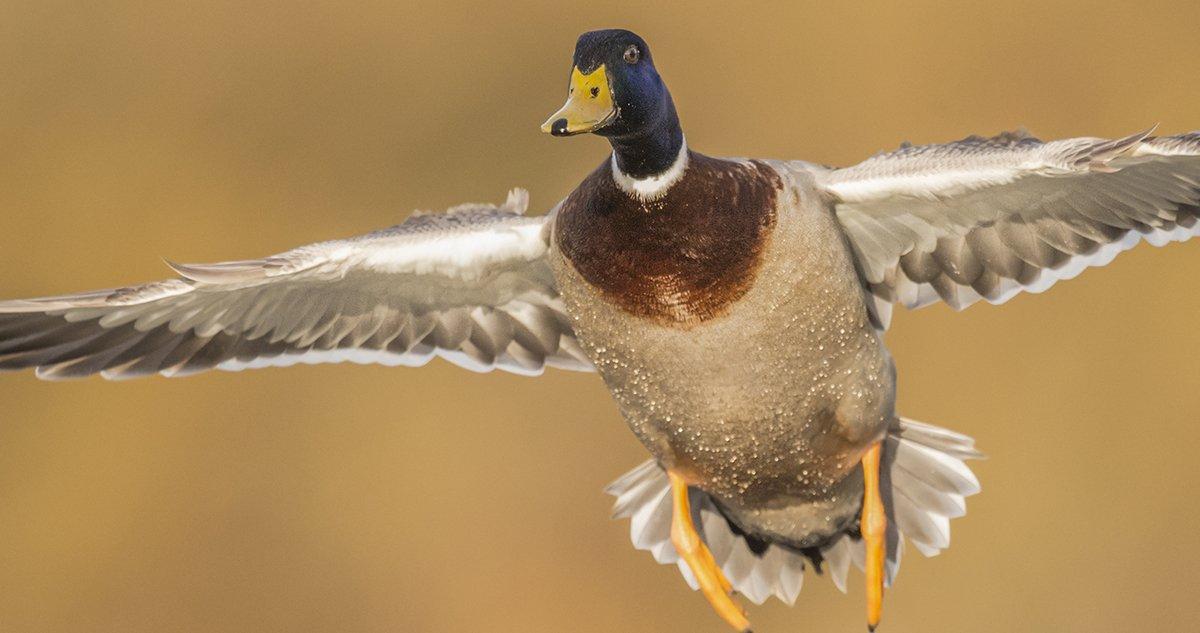Sometimes, Having Birds Right Off Your Barrel Creates Problems
Waterfowlers love to talk about decoying birds sure-kill close. Sometimes, whether intentionally or by accident, we take that to the extreme.
Everyone probably has a different definition of too close, but let's agree that birds within 15 yards probably fit that description. Yet when ducks or geese seemingly want to land on our blinds, we often let them, simply because the show is so cool, and it's an affirmation that our setup and decoys are working. But then weird stuff happens.
Often, we whiff on seemingly effortless shots at un-missable targets and then have to follow up with panicked second or third volleys to kill the birds as they flee. That shouldn't surprise anyone, as the pattern of even a moderately choked waterfowl gun at 15 yards or closer is probably the size of a golf ball.
The flip side to that scenario involves a smash hit, when that tiny pattern strikes the bird squarely, sending clouds of feathers into the air and often ruining much of the meat. Such hits often generate shouts of awe from blind mates, but from a practical standpoint, they're regrettable because of the meat loss.
After experiencing a few flesh-grinding, feather-puffing tight shots, you might experience another phenomenon: a close-quarters flinch. That is, you might shoot too early or hesitate on ultra-close birds, not wanting to blow them up. It's almost like target panic with an archer. Your mind says now, but your body seems to miss the signal, and then you must almost force yourself to aim again and fire.
Of course, we can avoid all this. Good shot callers let birds approach to optimum range — say 20 to 35 yards — and then spring the trap. And alert hunters often let close birds land or flare and then take them at better ranges going away. (Of course, you could just shoot them in the head at close range, too. That's a personal choice.)
Years ago, when my buddies and I hunted tight-quarters potholes from skiffs, we complained about teal eating us up by screaming in to 10 or 15 yards and then flaring like F-22s as we emptied our guns at their vapor trails. The solution was simple. When we saw teal approaching, we'd stand and flare them at 20 or 30 yards, which presented ideal rising or crossing shots.
I've taken the same approach with passing wood ducks or even fly-by divers, often letting them pass by a bit or flaring them early to get shots at reasonable ranges. Have you tried to shoot a crossing Mach-2 bluebill at 10 steps? Good luck.
Still, out of excitement or necessity, I still fall into the close-duck trap. Recently, I jumped a group of wood ducks on a small stream. Two quickly disappeared before I could react, but I heard a third flush and knew it was close. Suddenly, the drake appeared at 10 yards, flying right at me. Without thinking, I killed it … and then hoped there was something left for the grill. Miraculously, much of the breast was OK, but that was solely luck.
Why didn't you just let it flare, reset your feet and shoot it going away? I asked myself.
Because I was excited. And I guess that's why many of us fall into close-bird peril every season. Yeah, it's incredibly cool to see wild birds so close. And sure, it's far better to over-kill a duck or goose at 10 yards than to wingtip and lose one at 60. But some forward thinking and presence of mind might help us experience consistently better shots instead of reacting to in-your-face quickies.
Then again, we hunt waterfowl for the natural experience and adrenaline rush. Succumbing to it now and then by letting birds get too close might not be the worst thing.
Click here for more Realtree waterfowl hunting content. And check us out on Facebook.







